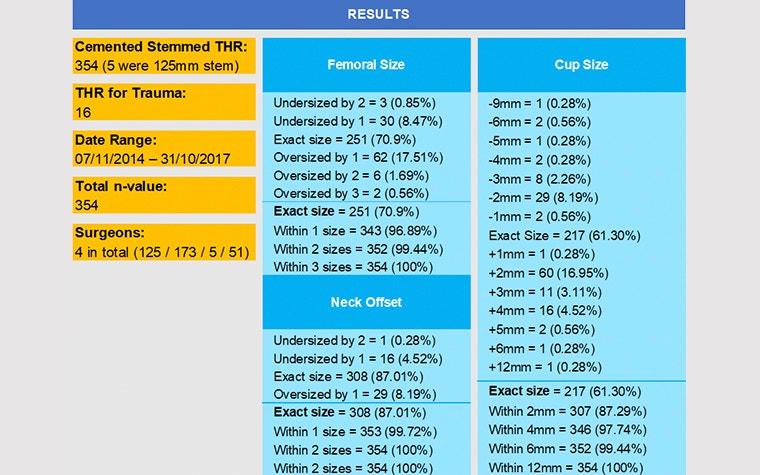EXPERT INSIGHT
How Accurately Can Templating Software Predict Implant Sizes?

In line with the trend towards digitalization, more and more surgeons are using templating software to plan their surgeries within different orthopaedic subspecialties and especially for hip replacement arthroplasty. The use of preoperative software, such as Materialise OrthoView, has increased drastically over the past 15 years along with the higher adoption of digital picture and communication systems (PACS) to store medical data.
This study adds to the investigation on how accurately orthopaedic templating software can predict implant sizes by accessing a large, multi-surgeon database of total hip arthroplasties performed during a four years period. This is the first time such a study has used UK surgical data.
Comparing template and final implant
Conducted by Dr. Michael Newman at the Queen Alexandra Hospital, the study was based on the digital planning data of four surgeons, who used OrthoView as their software templating tool. The research methodology compared the templated predictions made by Materialise OrthoView with what the surgeon implanted at the time of surgery. The study looked at the measurements for femoral prosthesis size, femoral offset, and acetabular cup.
In total, 354 cases were analyzed and used to calculate the difference between templating and final implant. The results were divided into three main categories, exact, undersized, and oversized, along with sub-categories of 1, 2, or 3 size parameters.


Results show that over 96% of the templated implants were accurate within one component size
The results show that the vast majority of the pre-planned implants fit into acceptable size differences for surgery. The templating software was very accurate when templating the femoral prosthesis size and offset, giving the correct size 70% of the time (251 cases) and was accurate to within one size (þ/_1 component size) in 96.89% of the cases (343 cases).
According to the study, cases where sizes differ from the digital planning may be an example of situations when the surgeon has manually switched component sizes that potentially falls between two component sizes. Another reason could be that the offset was borderline and an intraoperative decision was made to utilize the higher offset option.


Conclusion
The study concluded that planning using an accurate template may highlight intraoperative problems before surgery, reducing problems during surgery and allowing surgeons to make faster decisions in the operating room. It also alerts the surgeon to consider why there is such a large deviation if one has occurred. Choosing the right implant before surgery also brings benefits for healthcare providers because inventory can be more efficiently and effectively managed.
The complete study conducted by Dr. Newman, M., Shaw G. and Kane, T. can be accessed at Thieme E-Books & E-Journals
If you are a surgeon and would like to know more about the advantages of orthopaedic planning software, watch the video of Dr. Ross Barker explaining why he believes preoperative planning will become a mandatory procedure in the near future.
Or visit the OrthoView product page to request a trial.
以下で共有する:
